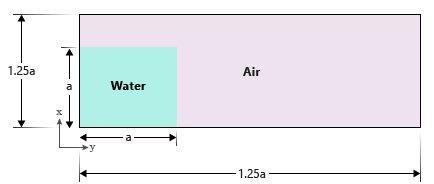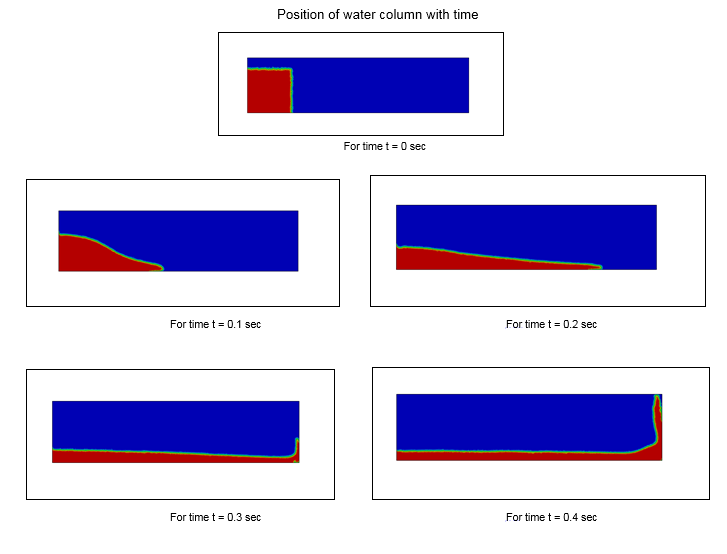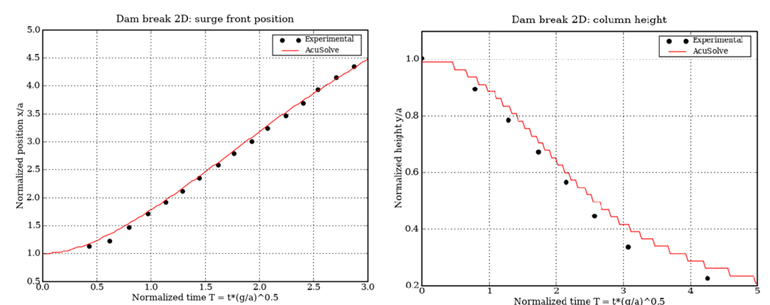Multiphase Flow of a 2D Dam Break
In this application, AcuSolve is used to simulate the collapse of a water column surrounded by air. AcuSolve results are compared with experimental results adapted from Rodriguez and others (2013). The close agreement of AcuSolve results with experimental results validates the ability of AcuSolve to model multiphase flow problems.
Problem Description

Figure 1. Critical Dimensions and Parameters for Simulating a 2D Dam Break Problem

Figure 2. Mesh used for Simulating Multiphase Flow of a 2D Dam Break Problem
AcuSolve Results

Figure 3.

Figure 4. Surge Front Position and Column Height Compared to Experimental Results for Simulating Multiphase Flow of a 2D Dam Break
Summary
The AcuSolve solution compares well with experimental results for a dam break problem. In this application, multiphase flow simulation of the collapse of a water column is performed. The experimental value for the normalized column height and normalized surge front positions is presented with the corresponding AcuSolve results. A good agreement of simulation results with the experiment validates the multiphase capability of AcuSolve.
Simulation Settings for Multiphase Flow of a 2D Dam Break
HyperWorks CFD database file: <your working directory>\dambreak_multiphase\damnbreak_multiphase.hm
Global
- Problem Description
- Analysis type - Transient
- Multifluid - Level Set
- Gravitational acceleration - { 0, -9.81, 0 }
- Auto Solution Strategy
- Final Time - 0.4 sec
- Initial time increment - 0.0005 sec
- Fluid 1 - Water
- Fluid 2 - Air
- Time Integration
- Time integration order – “second”
- Material Model
- Air
- Type - Constant
- Density - 1.2 kg/m3
- Viscosity - 1.1818e-006 kg/m-sec
- Water
- Type - Constant
- Density - 1000 kg/m3
- Viscosity - 0.001 kg/m-sec
- Air
- Multifield Parameters → Field Interaction Model
- Field 1 - Water
- Field 2 - Air
- Thickness type - Number of elements
- Number of elements - 3
- Fluid 2 - Air
Model
- Volumes
- Fluid
- Element Set
- Medium - Multi Field
- Multi field model - Water-Air
- Element Set
- Fluid
- Surfaces
- +Z
- Simple Boundary Condition - Slip
- -Z
- Simple Boundary Condition - Slip
- Bottom wall
- Simple Boundary Condition - Wall
- Left wall
- Simple Boundary Condition - Wall
- Right wall
- Simple Boundary Condition - Wall
- Top wall
- Simple Boundary Condition - Wall
- +Z
References
Joseph M. Rodriguez, Onkar Sahni, Richard T. Lahey Jr., Kenneth E. Jansen. "A parallel adaptive mesh method for the numerical simulation of multiphase flows", Computers and Fluids, Vol. 87, 2013, pp. 115-131.